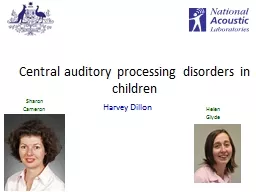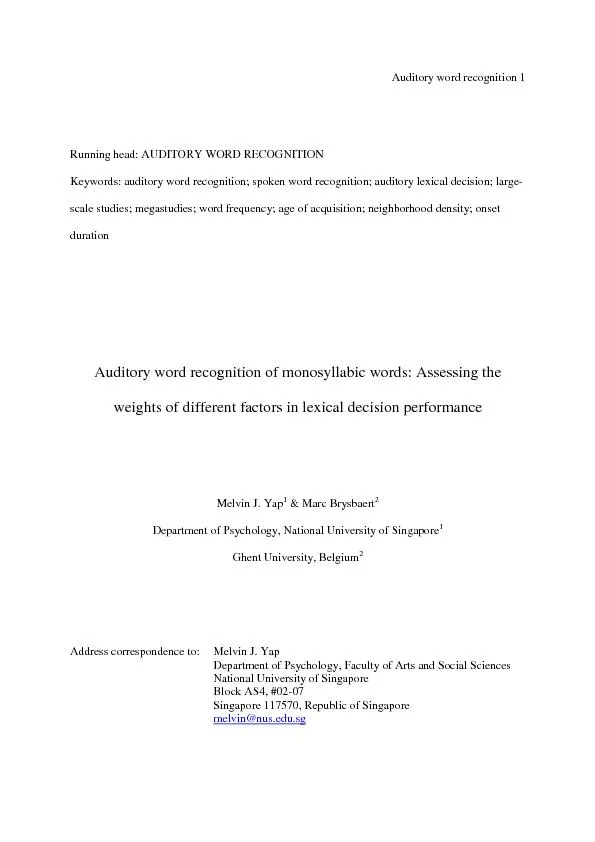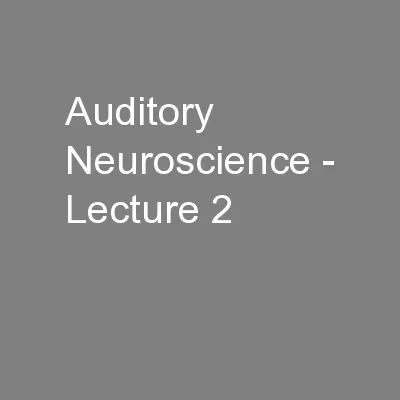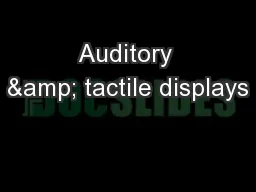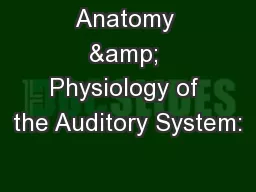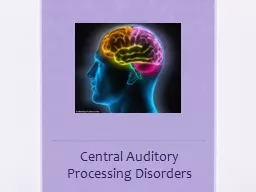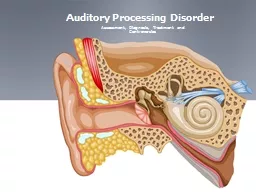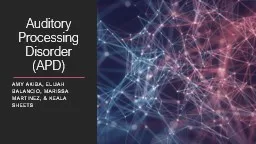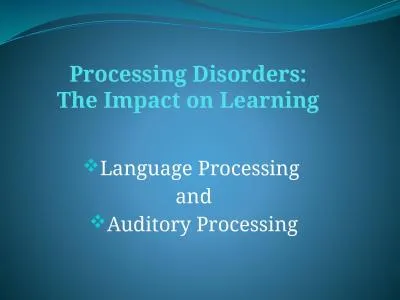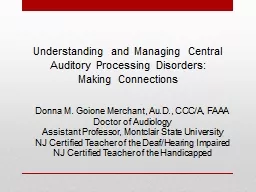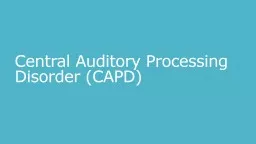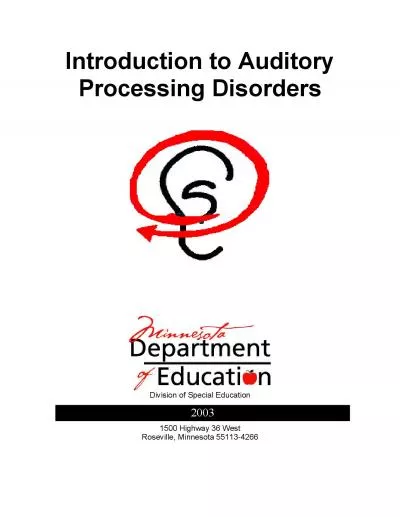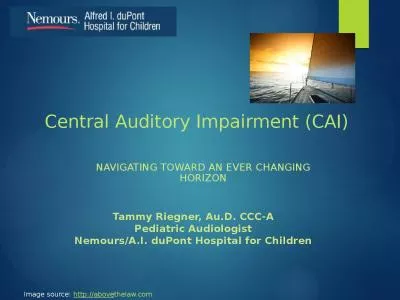PPT-Central auditory processing disorders in children
Author : evans | Published Date : 2022-04-06
Harvey Dillon Helen Glyde Sharon Cameron Disclosure The National Acoustic Laboratories is a division of Australian Hearing a Statutory Authority of the Australian
Presentation Embed Code
Download Presentation
Download Presentation The PPT/PDF document "Central auditory processing disorders in..." is the property of its rightful owner. Permission is granted to download and print the materials on this website for personal, non-commercial use only, and to display it on your personal computer provided you do not modify the materials and that you retain all copyright notices contained in the materials. By downloading content from our website, you accept the terms of this agreement.
Central auditory processing disorders in children: Transcript
Download Rules Of Document
"Central auditory processing disorders in children"The content belongs to its owner. You may download and print it for personal use, without modification, and keep all copyright notices. By downloading, you agree to these terms.
Related Documents

